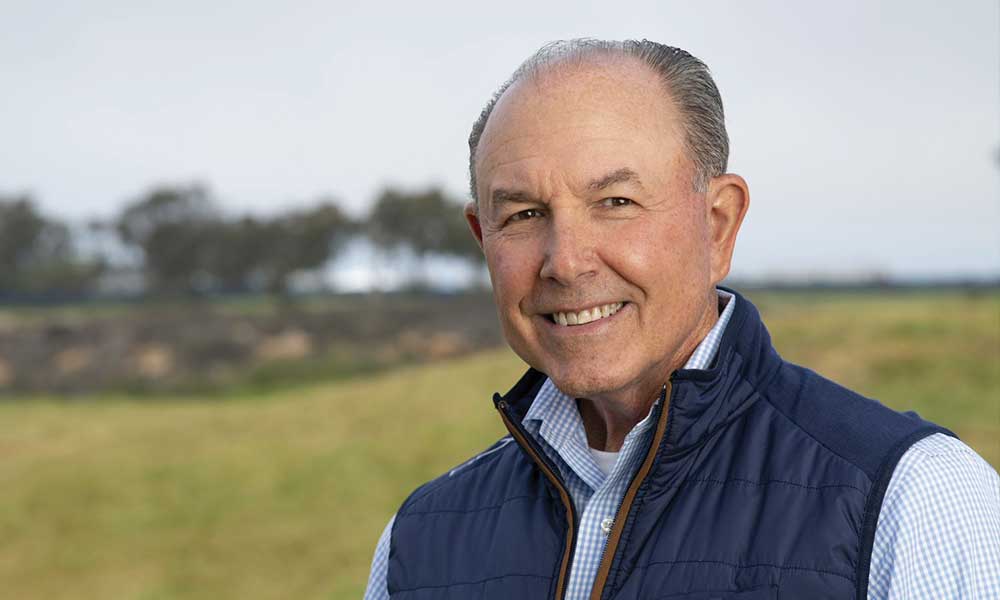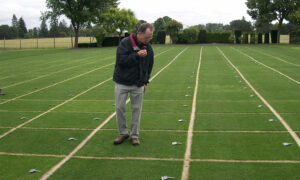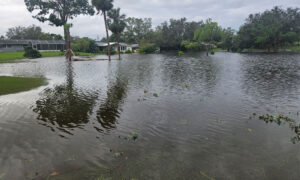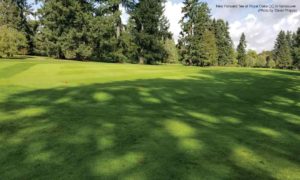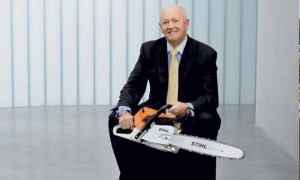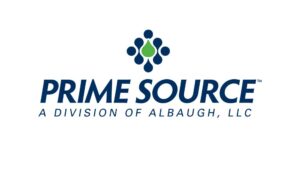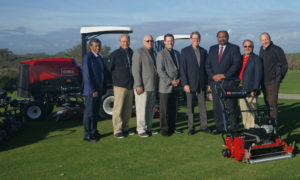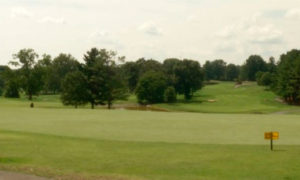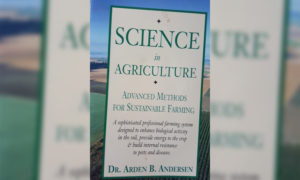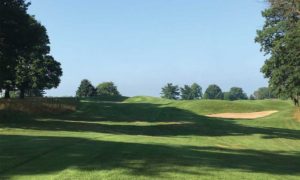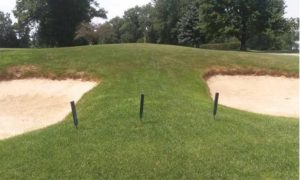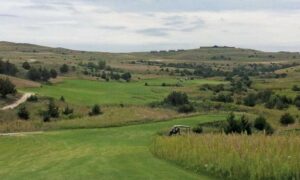This column features recollections of the author’s 35 years as a golf writer. These installments stem from his many travels and experiences, which led to a gradual understanding that the game has many intriguing components, especially its people.
I thought I had known John Bodenhamer for nearly 30 years. But I found out differently after reconnecting with my friend for this Q&A. As it turns out – since leaving the Pacific Northwest for the USGA and Far Hills, N.J. in June 2011 – John informed me we’ve been floating in the same golfing universe for nearly a half-century. For convenience’s sake, we’ve combined the two-part series into a single article, so read on!
There was enough “later” that it required me to write a two-part Q&A with Bodenhamer – the USGA’s Senior Managing Director, Championships – as he details his involvement in all aspects of the golf association’s annual competitions, along with other important areas in which it’s involved. He also reflects on how the USGA has managed to adapt to a two-year-old (and, unfortunately, ongoing) pandemic.
Bodenhamer got his start as a golf administrator in 1990 after becoming the executive director of the Pacific Northwest Golf Association (the fifth-oldest amateur golf association in the U.S.) and, two years later, the Washington State Golf Association. Bodenhamer came in and helped turn the associations into tight operations while adding many innovations for its thousands of members.
He expanded staff; organized “professionally-run” championships; started a four-color magazine; united the affiliated golf associations in Washington, Oregon, Idaho, Montana, and British Columbia; shepherded the PNGA through its Centennial celebration in 1999 and greatly assisted with the publication of its book (which I co-authored and edited), “Championships & Friendships: The First 100 Years of the Pacific Northwest Golf Association”; spearheaded the development and served as the first CEO of the PNGA/Washington Golf’s co-owned and operated Home Course (co-host of the 2010 U.S. Amateur and 2014 U.S. Women’s Amateur, and host site of the 2021 U.S. Amateur Four-Ball Championship); boosted the membership numbers of the organizations, and much more.
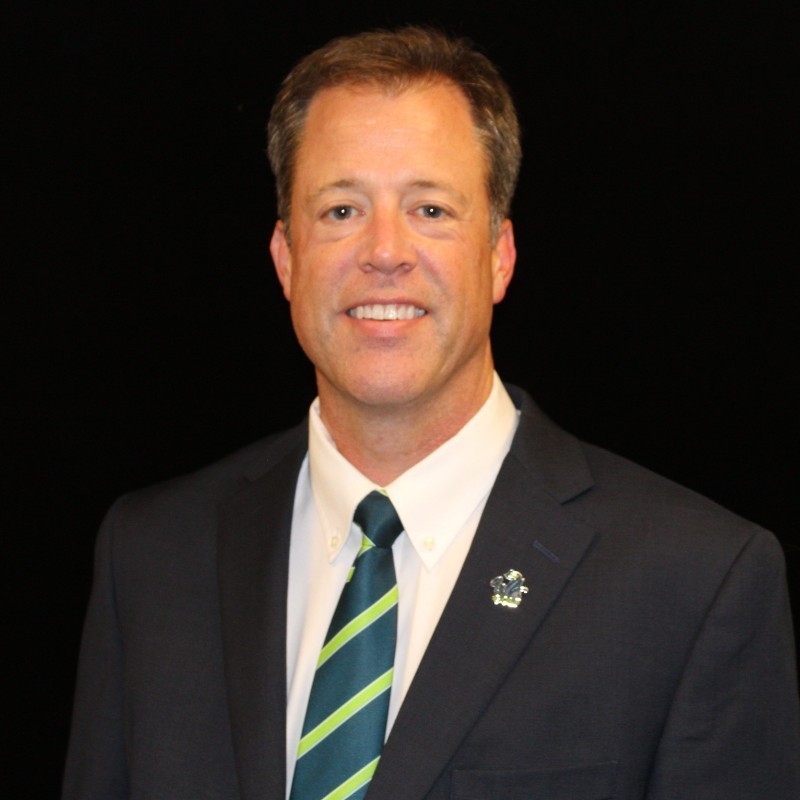
It was only a matter of time before the BYU grad would move on to bigger things. But he will never be forgotten by those of us in America’s upper-left-hand corner, where he united the golfing community and left his mark. Troy Andrew, CEO/executive director of the PNGA and Washington Golf (formerly the Washington State Golf Association) – and 2022 President of International Association of Golf Administrators – took the reins from Bodenhamer and had this to say about him:
“John is a mentor and great friend of mine. He is a tremendous leader and I have always believed in his thoughtful leadership style. I strive to emulate it every day. One of his many strong leadership traits is his genuine way of taking the time to seek other opinions before he makes any kind of decision. Furthermore, when success is achieved, he will always deflect the accolades and make sure his team gets the credit. He’s a very selfless individual. In my world of golf administration, John, to me, is our GOAT!”
Added Dr. John Wagner, a 30-year board member of both the PNGA and WSGA, and a three-year president of the WSGA: “John had the ability to present the issues and their pros and cons to the board so we could make the proper decision. Even though he had a position on an issue, he never imposed that on the board. In the end, it was all for the good of the game.”
Here’s Part 1 of my Q&A with John Bodenhamer.
Jeff Shelley: To what extent do you have control over the setup of a championship course and what assistance do you receive from fellow USGA staff?
John Bodenhamer: In my position as Chief Championships Officer, I have the privilege of overseeing all aspects of our Open and Amateur championships and related championship programs (i.e., entries, qualifying, world rankings, build-out of all facilities, player services, food and beverage, grandstands, parking/transportation, security, meteorologists, and much more). Therefore, I have the responsibility of developing and implementing the overall agronomic presentation and golf course setup philosophy and strategy for the organization of all our championships.
We have a documented course setup strategy that I created with my inner-circle team three years ago and it informs golf course setup for all our championships. Further, each individual championship is led by a Championship Director (lead staff member) who makes the day-to-day agronomic presentation and golf course setup decisions for each event in accordance with the philosophy.
That said, I work with a team of three others: Jeff Hall (Managing Director, Rules & Open Championships), Jason Gore (Managing Director, Player Relations), and Darin Bevard (Director, Championship Agronomy) in determining the agronomic presentation (i.e., length, green speeds, firmness, rough height, and tee and hole locations).
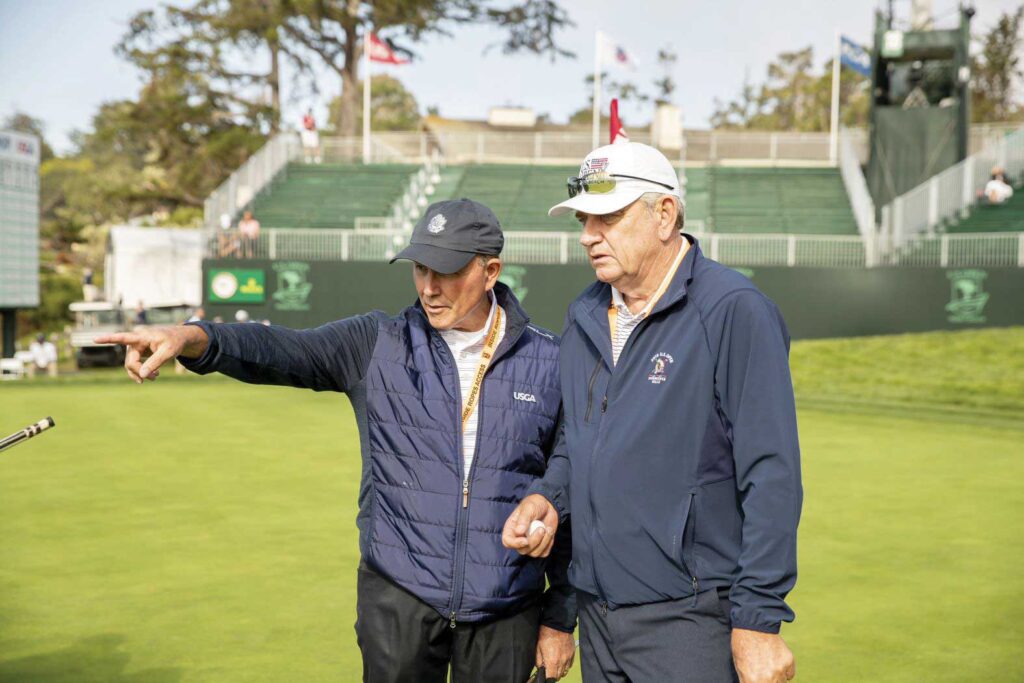
I have the ultimate decision-making authority, but we operate very much as a cohesive team not afraid to challenge each other. Former World No. 1 and multiple major championship winner, Nick Price, who is a member of our Executive Committee, also usually joins our team for golf course set up at the U.S. Open. We also seek information and input from others about the U.S. Open golf course, including the USGA Museum and Library from old magazine articles and film footage; caddies at the host venue and good players from the area; a few leading PGA Tour referees; as well as the head golf professional, golf course superintendent, and others as appropriate.
In 2019 at Pebble Beach, I brought in an old friend, Casey Boyns, who has been a caddie at Pebble Beach for 35-plus years. He knows the course like the back of his hand and happens to be an excellent player, having won two California Amateurs, and dozens of other NCGA and amateur events. He showed us the hole location we used on No. 18 during the final round. It was on a portion at the left side of the putting green that looked benign but was very difficult to read. It proved to be all of that! We invited similar input in places at Winged Foot GC in 2020 and Torrey Pines this year, and it was beneficial.
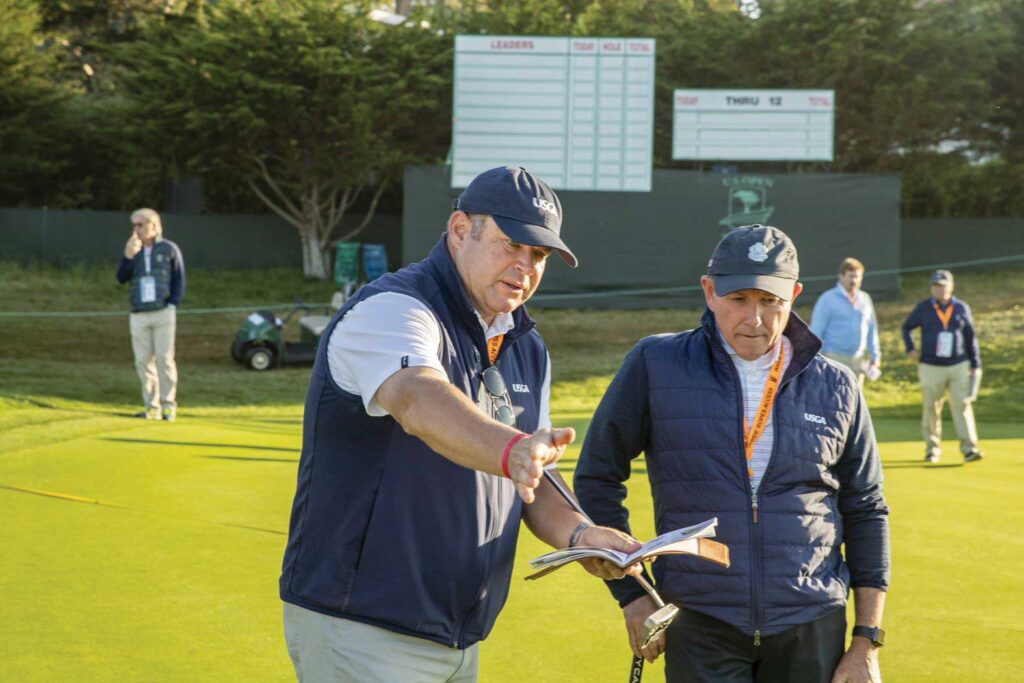
Overall, our strategy is to be “tough, but fair,” and provide a great challenge where par is a good score on each hole. Truthfully, we do not have a target score (i.e., par), as it always depends on the weather. If we have dry firmer conditions, it will play more difficult, and the scores will be a bit higher. If it is wet or we do not have much wind, it will be a bit easier, and the scores will be a bit lower. We simply endeavor to set it up as challenging, so the winner has won something very special. But if the weather does not cooperate, we just let the golf course be the golf course. We go to the world’s greatest venues for the U.S. Open and they are good enough.
JS: Please describe some of your major considerations when setting up a championship course and infrastructure. What are some of your favorite/more memorable stories (COVID?) about these areas?
JB: Every venue is different and presents its own opportunities and challenges around each aspect of conducting a major championship.
I would say the 2020 U.S. Open at Winged Foot in New York was incredibly unique because of COVID. As a result, we moved it [from the traditional mid-June date] to September when there’s less daylight and the weather is cooler. Most importantly, we had no fans and had to think out of the box in so many ways, including administering COVID testing to hundreds of players and caddies, as well as hundreds of additional workers, USGA staff, media, and others.
While these folks were wonderful partners, it was also a big task working through all the COVID challenges with the state of New York to obtain approval just to play the U.S. Open that year. Most people do not realize this, but it was only about six weeks beforehand that Governor [Mario] Cuomo gave us the green light to play. We felt we would get the necessary approvals, but it had to go to his desk and there was no guarantee he would sign off. Again, the state was a great partner, especially their medical advisors and security folks.
Of course, Winged Foot Golf Club was also an amazing host and, in essence, it had their own private U.S. Open. With no fans or outside volunteers allowed, we assigned about 400 club members as marshals and forecaddies to open walkways and find golf balls. Because we had 5” to 6” rough, finding golf balls was no easy task. Normally, with 30,000 to 35,000 fans attending a more typical U.S. Open, lost balls are rare. However, without fans, we were concerned we would lose lots of balls in Winged Foot’s thick roughs. To help with this, we employed dozens of Winged Foot caddies, who knew the course well, to serve as forecaddies, augmenting the members – many of whom were more caught up in watching the golf. Hiring the caddies worked! We only lost one golf ball all week.
It was also quite surreal to watch Bryson DeChambeau hole out on No. 18 to the applause of just a few dozen instead of the roars of tens of thousands. One nice moment came after Bryson signed his scorecard and came out to a big Cisco Webex screen on which his mom and dad were waiting to congratulate him. Because of COVID, they could not attend in person. But when seeing them on the screen that was facilitated by our staff and our partner, Cisco, he teared up as it was a special moment for him.
Also, because of no fans, television viewers were treated to an unobstructed Winged Foot golf course and clubhouse, with views that would not be seen during a normal U.S. Open with 35,000 fans and which all the grandstands, concession stands, and hospitality facilities cover-up. We have changed our strategies for the future because of this experience and are working to provide more open and unobstructed television viewing. Lots more happened at Winged Foot. We had a couple of players test positive for COVID, which was the norm then, and several other scares that did not materialize. Scary times back then.
The U.S. Open this past June at Torrey Pines was much different than Winged Foot. We had only eight months to prepare (and only five months to prepare for the 2021 U.S. Women’s Open, considering that the 2020 championship was played in December), so it was challenging. While New York was the early epicenter with COVID, California became the most challenging from a regulatory standpoint as cases were peaking over the winter and early in 2021.
As late as the end of February, we did not think we would be able to have any fans at either the U.S. Open at Torrey Pines or U.S. Women’s Open at The Olympic Club. However, by March, cases were declining rapidly, and things loosened up a bit. Helping matters was the fact that with the California weather we could build open-air facilities, especially in San Diego at Torrey Pines to create safer conditions. The vaccine was also kicking in, which ultimately allowed us to have about 7,000 fans at the U.S. Women’s Open in San Francisco in May and, as things loosened up a bit more, about 10,000 a few weeks later at Torrey Pines. I have never seen grandstands, concession stands, and merchandise tents go up so fast! In the end, we had two amazing championships.
The year 2020 was like no other. I hope we never see one like it again. We played our “Big Four” championships – the USGA’s four oldest: the U.S. Women’s Amateur (1895) at Woodmont CC in Maryland; the U.S. Amateur (1895) at Bandon Dunes; the U.S. Open (1895) at Winged foot; and, finally, in December, the U.S. Women’s Open (1948) at Champions Golf Club in Houston. In the end, we postponed Curtis Cup into 2021, canceled 10 championships (two U.S. Senior Opens and eight amateur events), and canceled all qualifying at 670 sites around the country and throughout the world, building “fully-exempt fields” for the four championships we conducted, which was no easy task.
It was truly heartbreaking, but we proceeded out of an abundance of caution. We felt so grateful in 2021 to be able to stage all qualifying and play all championships, as well as a Walker Cup in May and a postponed Curtis Cup in September, and have them all be conducted safely while realizing great champions.
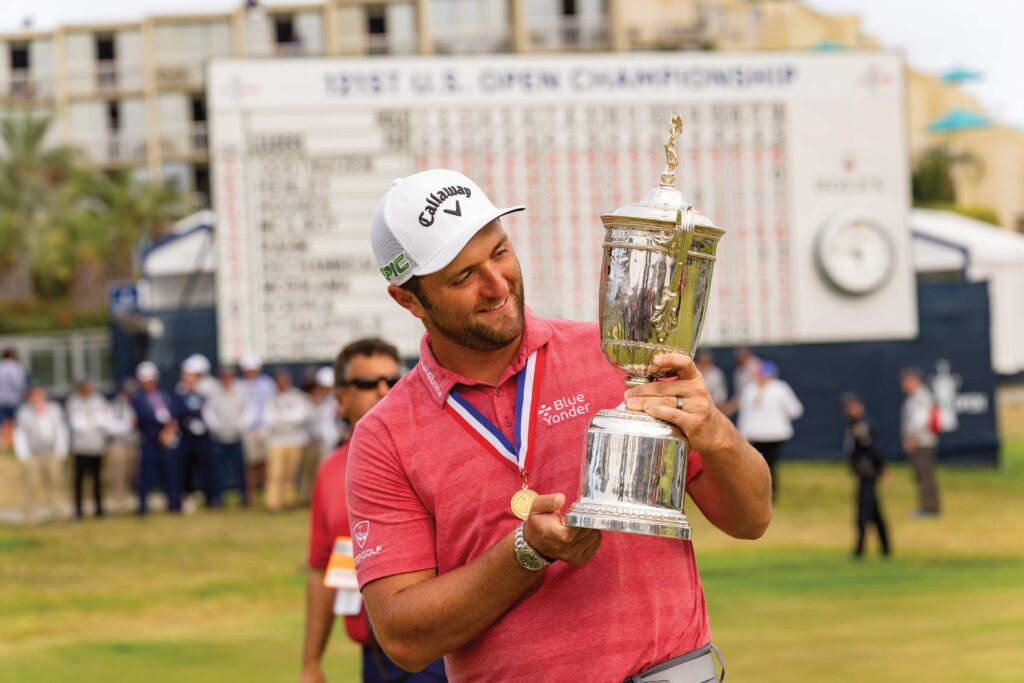
JS: How closely do you work with the championship venue’s superintendent, and how important is he/she in preparing the golf course?
JB: My team and I and each of the Championship Directors work exceptionally close with the golf course superintendent at each host venue. They, along with their maintenance staff, are our best friends in conducting a championship. That work starts at least two to three years in advance or longer if changes to a golf course are being made by the venue. It is a very tight partnership, as the superintendents are the experts on the conditioning and preparation of their golf courses.
We share with them, in very specific terms, the conditions and height of cut for tees, fairways, rough, and greens we request, and they deliver it to the best of their ability. They also have veto power when it comes to maintaining turf health, as that is most important. Finally, for a U.S. Open and U.S. Women’s Open, about 75 to 100 volunteer superintendents and assistant superintendents travel in – at their own expense – to assist the host golf course superintendent to prepare the golf course for the championship. Maintenance turf equipment manufacturers like Toro, John Deere and Jacobsen also donate the use of many additional fairways, rough, and greens mowers, as well as other vehicles and equipment to assist with the effort. It is a huge production, and our staff is right in the middle of it.
We also have lots of unique equipment we employ to maintain the type of USGA championship conditions we desire, such as the Stimpmeter for green speed; a moisture meter for greens; a TruFirm bicycle pump-looking device to measure the firmness of the putting greens, and more. At Torrey Pines last June, we experimented with a golf ball that has sensors in it to measure the smoothness of the greens. It worked well and we’ll be testing an advanced prototype this coming summer.
Further, after multiple visits over the two years leading up to a championship, we begin to meet daily with the superintendent and his key team members the week prior to the championship and each day during the event to set the plan for the next day. Again, it is incredibly detailed work and gets right down to the number of cuts and rolls on each putting green, irrigation plans, bunker raking, and much more that is decided. This is all dependent on the weather, especially the wind. In the end, it is part science and part intuition and instinct when our championship directors partner with the golf course superintendent to create true USGA championship conditions. It really is an amazing thing to witness when it all comes together.
JS: Do host superintendents significantly alter their agronomic practices in advance of USGA championships? If so, how far ahead of the event are these implemented?
JB: Yes, but the amount depends on the championship. For a U.S. Open or U.S. Women’s Open, it starts two to three years or more in advance, as we will narrow fairways and begin to grow rough. We will even grow test plots at certain heights to see how it behaves. At Winged Foot, the golf course superintendent had to keep the roughs irrigated through sweltering summer temperatures, something which we usually do not have to worry about when playing the U.S. Open in June.
At Torrey Pines, the golf course superintendent implemented a program three years out that encouraged growth earlier in the spring for the Kikuyu grass rough, which thrives in warmer temperatures. At the 2019 AT&T Pro-Am in February, we narrowed up the fairways to U.S. Open widths so the guys could see what we were planning for June. The rough was only about 2” in February and we had it at 5” in June. But we started narrowing the fairways in the fall of 2018 to show the players our plans four and a half months in advance.
There are all kinds of stories like this with the U.S. Open and U.S. Women’s Open, and even the U.S. Senior Open or U.S. Amateur and U.S. Women’s Amateur. For some of our other championships such as the Mid-Amateurs, Junior Amateurs, or Senior Amateurs, we generally do not require quite as much depending on the demographic and the specific golf course architecture. But we still maintain a tough setup – long rough, fast, and firm greens, etc. – in order to have players “get every club in their bag dirty” and to place a premium on driving your ball in the fairway and keeping it below the hole.
JS: What factors determine course setups before each championship round, and is it challenging to maintain a “level playing field” over 72 holes for the entire field vis a vis today’s long hitters?
JB: Yes, we attempt to have the same playing conditions throughout the day for all players, but it is very challenging to provide a level playing field. Remember, players generally have an early and a late starting time, so that usually helps level things out. But, again, it all depends on the weather . . . everything depends on the weather.
Overall, we set up a golf course to test the world’s very best players, where length, accuracy, shot-making, scrambling, short game, mental fortitude, and physical stamina are all tested. Long hitters have always had an advantage and probably should, just like those who read greens well have an advantage. That said, the biggest factor that most impacts our thinking is the weather, especially the wind. With our green speeds, desired firmness, and the difficult hole locations we choose, we must make sure to understand the speed and direction of the wind. If we get that equation just a bit wrong, it can prove disastrous. Seventy-one good hole locations are not good enough!
Also, dry conditions are always what we seek, as it allows us to create firm and fast conditions. That way, players must not only control their ball in the air but also plan for what it will do once it hits the ground. They must think about where they can miss it and be able to have a reasonable chance of getting it up and down. That is where Tiger Woods is so brilliant. Further, the best shot-makers like firm and fast conditions because they can control their golf ball and hit it high and low, left to right and right to left. They have an advantage over those with less control. That is why the cream usually rises to the top at a U.S. Open.
Tom Watson often talks about his dad telling him as a young man, “Tom if you can win the National Open, you will have really done something special, as you will have won on the toughest course of the year.”
That is what we do: create something special and, when a player wins, they have achieved what Jones, Hogan, Palmer, Nicklaus, Watson, Woods, and DeChambeau have done. It is more meaningful.
Part 2 of Q&A with John Bodenhamer
HERE ARE SOME PERSONAL REFLECTIONS ON JOHN’S EARLY DAYS IN GOLF.
The 60-year-old Pacific Northwest native now lives 20 minutes from the USGA’s headquarters in Far Hills, New Jersey, with his wife Pam, who grew up in Kirkland, Washington, and graduated from the University of Washington in Seattle. The couple have two children. Son John is an attorney in Harrisonburg, Virginia, and daughter Megan is in her second year of law school at William & Mary in Williamsburg.
“JB,” as he’s known by friends in the Puget Sound area, is a local legend. In Part 1, I described how he benefited the golf community here during his 22 years as the executive director of the Pacific Northwest Golf Association and Washington State Golf Association (now Washington Golf). Born and raised in Lakewood, south of Tacoma, John was a heck of a player in his early years, winning multiple state amateur titles and earning a scholarship at BYU.
Bodenhamer started out on the lowest rung of the golf ladder at a funky, now closed nine-hole course in Lakewood called Fort Steilacoom. In exchange for free rounds, the young teen performed such timeworn golf chores as: “Sweeping dew off greens . . . watering fairways and greens into summer evenings until midnight . . . picking the range and cleaning the carts.”
[Author’s Note: I likely ran across John when he worked at Steilacoom GC. After my discharge from the U.S. Army in early 1973 and residing in Billings, Montana, for three and a half years, I returned to the Puget Sound area and briefly lived with my parents in Lakewood before entering the University of Washington in spring ’77 to finish my English degree. Every Saturday morning, I joined my father and his pals for a round at JB’s first place of employment.]
He describes the following people as mentors:
“My parents, Don and Ruth Bodenhamer – who instilled in me and my brothers to always treat people the way you would want to be treated.
“Earl Steen – the manager at little Fort Steilacoom GC in Lakewood, where I learned to play, who gave me my first job sweeping dew from the greens on early weekend mornings ahead of men’s club play. I learned about hard work as a 12-year-old walking the fairways at the crack of dawn with a garden hose around my shoulders and whipping it across the small greens to remove the dew, all for free green fees. It is where I got hooked on the game.
“Oakbrook Golf Club’s head professional, George Lanning – who took me under his wing and gave me lessons without charging me and quietly went about his business as a consummate club professional and businessman, all while making himself an expert on the Rules of Golf through constant reading.
“My Lakes High School golf coach, Len Nelson – a math teacher and decent guy who always encouraged us to believe in ourselves.
“My college golf coach at BYU, Karl Tucker – who taught me that first impressions matter and to not overthink things and ‘just go play.’
“My first PNGA President, Bill Mays – a Tacoma lawyer who was surly as can be but had a heart of gold and always operated with amazing dedication and the utmost of integrity.
“The past president of Tacoma Country & Golf Club, the WSGA, and The Home Course, Bill Bergsten – whose guidance and selfless commitment to others inspired me. He told me once before going into an interview or a Board meeting, to make sure to ‘answer the question from the start.’ In other words, do not get caught up in babbling about minutia, just get to it and answer the question. That has served me well over the years. Bill is one of the smartest and kindest individuals I have ever known.”
He recalled some of the habitués – along with a particularly memorable round of golf – at the Ft. Steilacoom course, which bordered Western State Hospital (one of the West Coast’s largest mental institutions) and that I mentioned in an earlier “Making the Rounds” column.
“I remember coming out and playing, watering the fairways and greens into the summer evenings until midnight as a 14- to 15-year-old, and driving the Cushman around with a guy named Tom Anderson, who was a bit of a hippy and probably called cannabis a friend,” Bodenhamer said.
“Then there was Tom Cornell, a thalidomide baby who played one-armed with an attachment on his clubs. He was about a 15 handicap and weighed about 100 pounds, drank beer like a wild man, and let us kids have the run of the place. It was a zoo, but in a great way.
“Another was Gary House, who could really bomb it. He won consecutive Tacoma City Amateurs and would come out and play with us kids all the time. He never did anything but swing out of his shoes on every shot, even wedges. And boy did he have a temper. I witnessed him throw more than a few clubs. Nonetheless, he was a great guy and part of the reason I always wanted to win the Tacoma City Amateur, which I did twice in 1982 and 1984, beating guys named Brian Mogg [now a noted golf instructor], Mark Sivara [a longtime head professional], John Harbottle [a prolific golf course architect], Scott Geroux [who briefly played on the PGA and Nike tours] and others.
“In May of 1978, when I was a 16-year-old junior on the Lakes High School team, we had a scheduled practice at Ft. Steilacoom, as we usually did on Wednesdays because it was men’s day at Oakbrook, and could not play there after 1:00 p.m. This Wednesday was in a downpour and only Steve Leonard and I showed up to play. Play we did and I made the turn in 5-under 29 . . . the first time I had ever broken 30, with a bogey on the 8th. It continued to pour, but I had a funny feeling that I might be able to have a shot at breaking House’s course record of 59 from several years earlier and was the pinnacle everyone coveted.
“On the second nine I started out birdie, birdie, birdie, eagled the 5th, birdied the 6th, 8th and 9th to shoot 26 . . . and a total of 55 . . . 13-under par with a bogey! I was elated, and Earl Steen called all the newspapers. Steve, our next-door neighbor, shot 73, which was not bad in heavy rain. I still have the scorecard, which hung in the little Ft. Steilacoom clubhouse for years afterward, thanks to Earl. I grabbed it when my brother and I went out there just before the course closed a few years ago. We played nine holes and I shot an even-par 34. Lots of memories there. I was sad to see it go.”
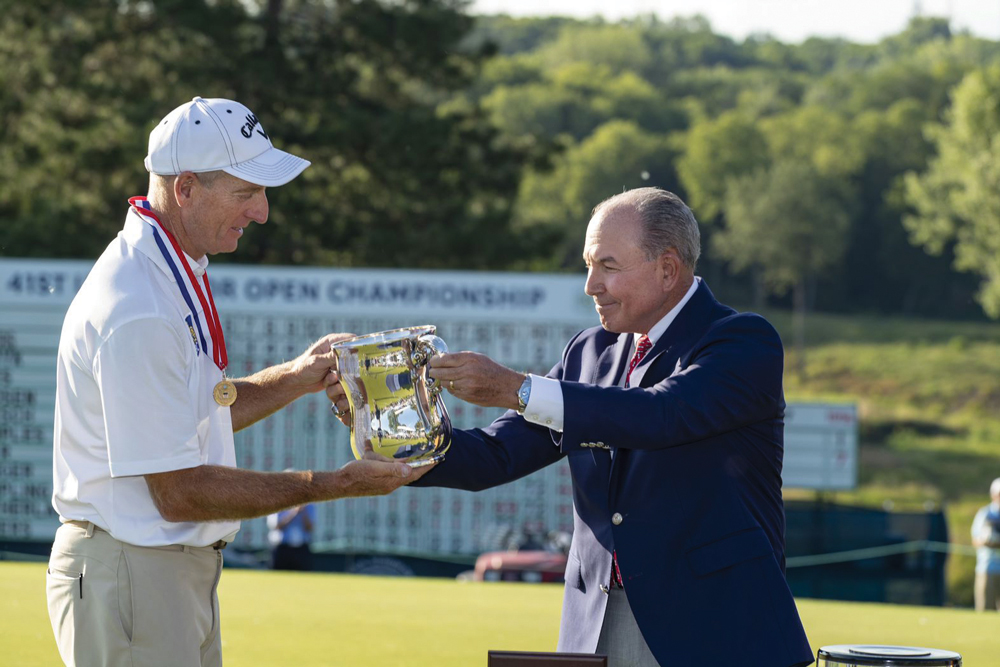
Here’s the second half of my Q&A with John Bodenhamer.
Jeff Shelley: Beyond championships, what other USGA areas do you lead? It looks like there’s a lot on your plate. Please briefly describe.
John Bodenhamer. When I first came to the USGA, I oversaw the inside-the-ropes aspects of our championships (i.e., Rules, agronomic prep, setup, as well as our governance functions, which are the Rules of Golf, Rules of Amateur Status, Equipment Regulations and the Test Center, and Handicapping/Course Rating). In 2018, Mike Davis changed my role and asked me to assume from him the course setup duties for the U.S. Open, as well as most of the outside-the-ropes activities of our Open championships, too. As such, I handed off the governance duties to my colleague and friend, Thomas Pagel. Today, I oversee the following:
- Most all aspects of four Open championships, including agronomic preparation; golf course setup; construction of all facilities . . . including those for players, fans, media, merchandise, hospitality, broadcast television and digital; as well as parking, transportation, security, government relations, volunteers and much more. It is a complex undertaking and we, in essence, build a small city when conducting one of our Opens. We have a talented and experienced team headquartered in Pinehurst that manages the day-to-day work which usually begins three to four years in advance.
- All aspects of 11 Amateur championships. While fans are minimal, much of the above is still needed, but on a smaller scale.
- Player Relations and Player Experience for all Open and Amateur championships, with a team of seven who directly engage with the professional men and women, as well as college, amateur, and junior players at every level.
- Five international competitions, including the Walker Cup, Curtis Cup, men’s and women’s World Amateur Team championships, and the Latin America Amateur Championship in partnership with Augusta National Golf Club/The Masters and R&A. This includes managing our international team-selection process to select Team USA members for the above competitions.
- All domestic and international qualifying at approximately 670 sites through which approximately 42,000 players enter each year and follow their dreams to play in a USGA championship.
- The awarding of over $30 million in prize money at our four Opens, trophies, and medals for all championships, as well as replicas for past champions and clubs.
- The Official World Golf Ranking (OWGR) for professional men, the Rolex Ranking for professional women, and the World Amateur Golf Ranking for amateurs.
- All future site selection for all our Open and Amateur championships. As you may have seen, we are engaging in a number of “long-term relationships” with iconic venues over the next 25 to 30 years at places like Pinehurst, Oakmont, Merion, and Bandon Dunes, with more to come soon.
- I also serve as a member of the USGA Executive Leadership Team (ELT), working with CEO Mike Whan and five other colleagues in setting the strategy and budget for the organization.
Yes, I have a lot on my plate, but I love every minute of it, as it is a passion for me! A side story is when I was a teenager, I would spend all my summer days at Oakbrook Golf & Country Club in Tacoma. After picking the range and cleaning the carts, I would play the first, second and third holes on my way home, as our family residence was across the street from the third green. Each night as the shadows lengthened and the sun was going down, I always had the final day’s putt on that third green . . . and it was always to win one event . . . the U.S. Open. To do what I do today is a dream come true and a heavy responsibility. Further, the proceeds from each year’s U.S. Open largely funds all the other non-revenue-generating things we do for the game, such as Rules education, the Museum, Equipment Test Center, Amateur championships, growing-the-game initiatives like Drive, Chip & Putt, First Tee, and LPGA/USGA Girls’ Golf and more.
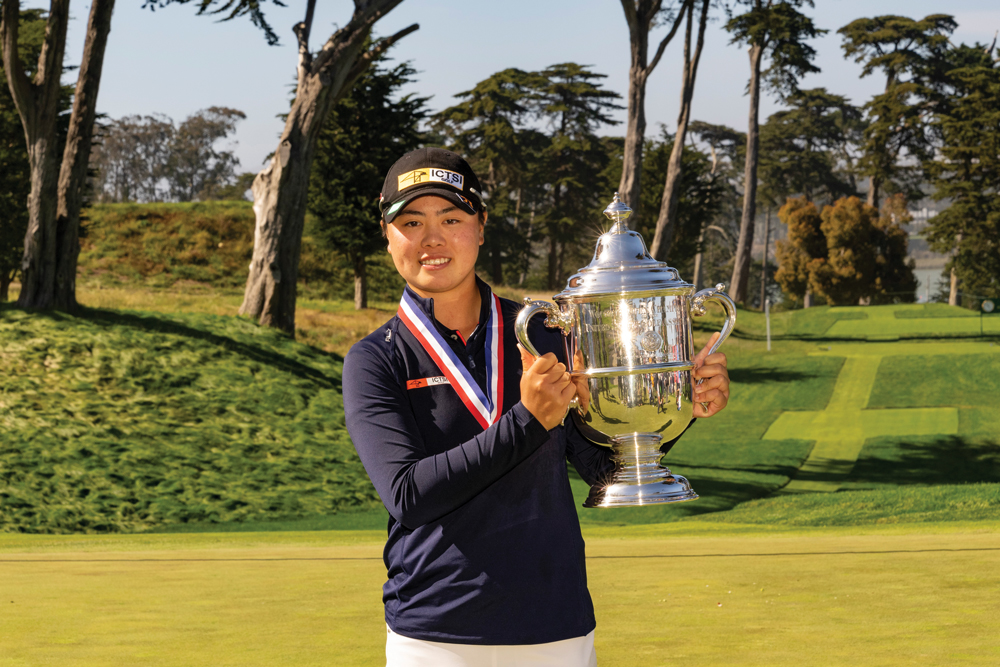
JS: Please discuss some of your more significant on-course and equipment rules’ changes/decisions, resulting controversies, and how you and the USGA assess the feedback.
JB: When I was still overseeing our governance functions, writing and adopting the Anchoring Rule was significant. It was a decision that we knew would not make everyone happy, no matter which direction we went. Therefore, we decided to do what we thought was best for the long-term interests of the game. That was to maintain a “free-swinging stroke,” which is how golf has been played for more than four centuries. And that is what we did. Some said millions would leave the game but that, thankfully, has not happened.
Our “Rules Modernization” initiative was the biggest change the USGA and R&A have undertaken in 40-plus years. We simplified the Rules and made them easier to understand and use, and while they are still complicated, we play a complicated game on different playing fields, in all sorts of weather, with a variety of clubs and balls, and by millions of people with differing skill levels, so they will naturally have some complexity.
However, the elimination of silly penalties was the biggest improvement as we brought common-sense applications and everyday language to the Rules along the way. We even put the new Rules out there for six months and asked people what they thought. More than 22,000 responded. Lo and behold, we listened and changed a few things before releasing the final set of Rules. I was glad to see it through, as it was seven years in the making. That was a defining moment for the USGA and R&A, as we used to just say, “Here are the New Rules” and expected people to just accept a decree from on high. Those days are gone, in my opinion.
Since I handed off governance to Thomas Pagel, we have modernized the Rules of Amateur Status, including Name Image and Likeness (NIL), and released our Distance Insights report, which makes it clear that we will work collaboratively with the industry to encourage innovation, but with a balance so golf remains the great game it has always been. We also worked collaboratively with the professional tours on developing a local Rule for Green Reading Materials and on a limitation of 46” for shaft length.
Again, collaboration is the keyword. Governance is hard. If it were easy, everyone would be doing it. It is important for the USGA and R&A to serve the game in this objective manner, but to do so while listening and respecting a variety of opinions before deciding.
JS: Were you interested in golf course design and/or agronomy as a young golfer in Tacoma, or were you more into just playing? And when did you get the idea to make a career as a golf association administrator?
JB: Growing up, I loved competition and wanted to one day play on the PGA Tour. Health issues helped derail that, along with limited talent [John inserted a smiley face emoji here in his email]. But I have always been intrigued with golf course setup while challenging the best players and getting inside their heads with strategy. Today’s players – men and women – are so good, it is an ever-changing dynamic. It is really rewarding to provide them with what they say is a tough but fair test while giving them the opportunity to do something special on the game’s greatest stages, where some of golf’s greatest moments have been etched in U.S. Open history.
When the Pacific Northwest Golf Association and then the Washington State Golf Association hired me, I spent the first decade transforming our championships and the player experience into something special. Golf course setup was a big part of that, and I loved the strategy behind preparing a course for good players. Going to the USGA and having the opportunity to work closely with Mike Davis and others was an honor and I have learned so much, especially from my good friend, Mike.
Now to have the ultimate responsibility of setting up the game’s toughest tests, is something I relish. I would not call it fun and, in fact, it’s quite stressful. However, when it comes together like it did at Pebble Beach, Winged Foot, Torrey Pines, and the Olympic Club (U.S. Women’s Open), it is incredibly satisfying and rewarding.
As far as making golf administration my career, I never thought that would be my path. When the PNGA came calling in 1989, I was working in Washington, D.C. for U.S. Senator, Orrin Hatch (Utah). I worked on his Judiciary Committee staff and it was fascinating. Joe Biden, Ted Kennedy, John McCain, Strom Thurmond, Charles Grassley, and others on the committee made it an amazing experience. I was preparing to go to law school, become an attorney, and make working on Capitol Hill my career.
However, after several Tacoma friends – including Joan Teats and Pat and John Harbotttle – encouraged me to seek the PNGA Executive Director position, things fell into place, and they took a chance on hiring a 29-year-old kid. Once I returned to Seattle and was back involved in conducting PNGA and WSGA championships, as well as USGA qualifying – events in which I had grown up playing, I knew it was my calling. The 22-year journey at the PNGA and WSGA, and, beginning in 1998, annually conducting the Pacific Coast Amateur Championship up and down the West Coast as one of amateur golf’s premier events, along with the guidance of several mentors along the way, prepared me for what I do now. It was all meant to be, and I feel so fortunate and blessed to have traveled this journey the past 33 years. As such, every day I feel an obligation to give back to the game that has given me so much.
JS: Did your work at the PNGA help in preparations for your much larger role with the USGA?
JB: Yes, as I mentioned above, it absolutely prepared me for my work with the USGA. The PNGA and WSGA provided the greatest proving ground for administering competitions. We conducted championships in four states and a Canadian province, as well as throughout the West with the Pacific Coast Amateur, experiencing differing climates, golf courses, and cultures, which was a microcosm of what I do today at the national and international levels.
I have always enjoyed people and golf attracts the best. Building relationships and partnerships are something I have always enjoyed and, when you get right down to it, conducting the world’s best championships is all about relationships. Whether it is with the players, caddies, agents, coaches, or host venue leadership and staff, to the media, government officials, and vendors, it is always about relationships.
Also, I have always kept a few thoughts close as I have gone about my business. One that has guided me is to always try to do the right thing . . . especially when no one is looking. I follow politics closely, study great leaders from many fields, and along the way, I have taken great inspiration from the following quote by Robert F. Kennedy:
“Some men see things as they are and ask, why? I choose to dream of things that never were and ask, why not?”
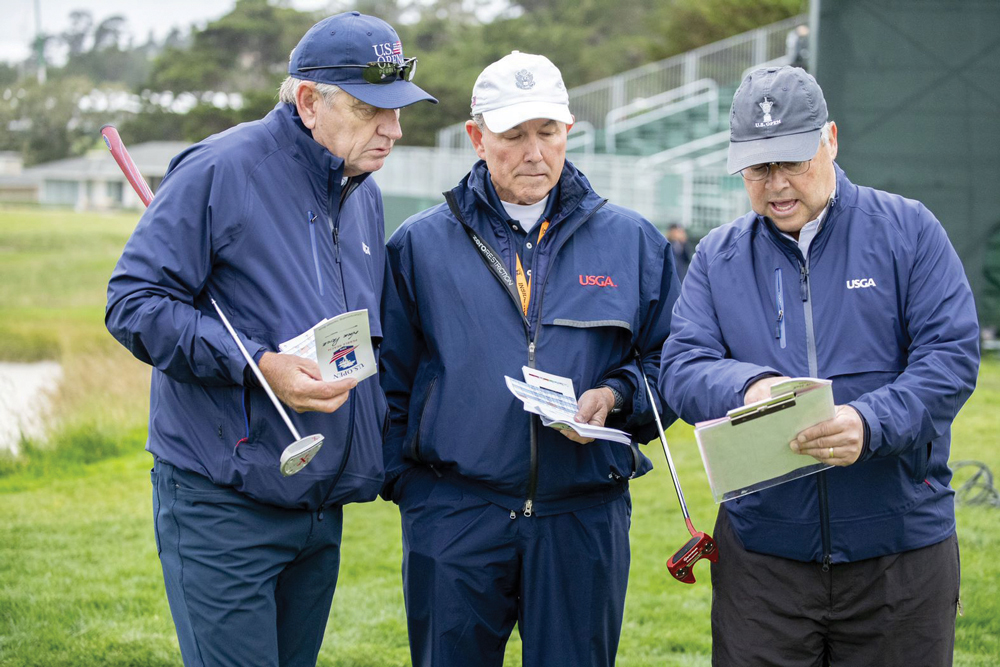
JS: Please give your thoughts on the current state of the USGA and provide a peek into its future, as well as yours within the organization.
JB: The USGA has come through quite a bit of change this year. Mike Davis retired, and Mike Whan is our new CEO. Therefore, lots is still to unfold, but I am very excited about the future and the pathway we have chosen. It is a great time to be at the USGA. We have never been more financially strong, we are creating long-term championship partnerships with the game’s greatest venues, we are acting with courage on the governance front to make sure the game innovates and evolves, but in a manner where talent and skill remain the reasons for optimal performance.
As a result of our long-term relationship and five U.S. Opens going to Pinehurst over the next 30 years, we have expanded our presence with Golf House Pinehurst, showcasing the USGA story and mission to more than one million golfing visitors each year. At our Annual Meeting this coming February, we will unveil five big and bold ideas to lead the game into the future on the most important issues, including water conservation, economic and environmental sustainability for the game and golf courses, and so much more.
Finally, we are transforming our relationships with the players, who are the most influential voices at the professional level, and hopefully investing in what is important to them. This will make them advocates and ambassadors for the pathway we are on to make sure the game grows and thrives 10, 20, 50, and even 100 years from now.
Jeff Shelley has written and published nine books as well as numerous articles for print and online media over his lengthy career. Among his titles are three editions of the book, “Golf Courses of the Pacific Northwest.” The Seattle resident was the editorial director of Cybergolf.com from 2000-15. For seven years he served as the board president of First Green, an educational outreach program that is now part of the Golf Course Superintendents of America and Environmental Institute for Golf.

